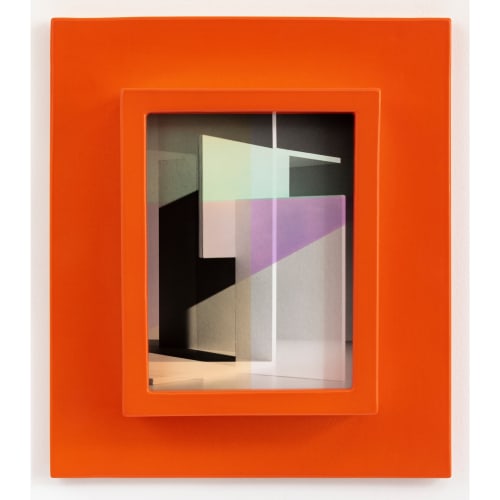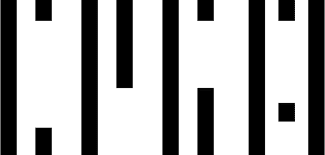Artist talk with Shirana Shahbazi and art historian and curator Madeleine Schuppli Sunday, June 11th, 12 pm - 1 pm
The artist will incorporate two groups of works consisting of multi-part lithographs and hand-colored silver gelatin prints in sculptural ceramic frames, a colorful wall installation with surfaces of ceramic, and, as a premier for the artist, a cinematographic work. A talk with Shirana Shahbazi and curator/art historian Madeleine Schuppli will take place on Sunday, June 11 at 12pm during Zurich Art Weekend.
Shahbazi is widely known for her conceptual use of analog cameras through which she continuously questions the perception of time and space. Traditional printing techniques, such as lithography or silver gelatin print serve as a solid basis to combine various experimental processes. They create an independent pictorial world that is typical of the artist. Through this process, Shahbazi manages to make the simultaneity of different realities and perspectives tangible. The groups of works are closely related to their spatial surroundings and intervene with the architecture of the exhibition space. The theme of disassembling, superimposing, and recombining surfaces and motifs goes far beyond the boundaries of the pictorial surface and makes Shahbazi's exhibitions a multi-layered work of art.
The small works with ceramic frames grow out of the intimate walls of the old building on Rämistrasse like precious objects and seem to be arranged randomly in groups of two or three. Only when looking at them more closely one becomes aware of the precise photographic composition of the subjects: the works show spatial fragments whose outlines are clearly defined by a hard light and shadow of the originally black-and-white print on baryta paper. The architectural elements define a space that, similar to a dream, can no longer be fully assembled and yet remains perceptible. However, the transparent glaze colors in delicate mint turquoise, beige yellow and old pink, soften the contours in a fine, minute gradation. It is left open to the viewer to interpret where the space begins and ends, where the walls and corners emerge, fall away, or cast shadows. The colored ceramic frames in rich crimson, blackberry, or moss green, hover like small windows in front of the suggested architectural space.
The large, multi-part lithographs refer back to past projects such as the 2019 series New Good Luck that were created during the artist's residency in India. But the subject matter in the new group of works seems much more personal. Each work shows a female figure that seems to float with infinite strength and lightness in a space that is not explicitly defined. The abstract spatial elements from the small ceramic works are taken up to superimpose the figurative motifs as transparent surfaces, withdrawing them from the viewer. Overexposed sections suggest the shimmer of refracted light in the water. But the advanced elements of the room, the bright orange-red and the deep anthracite of the contrasting color areas make the space intangible. It is an amalgamation of different pictorial realities that separates the depicted moments from their spatial and temporal location and grants them a deep poetic dimension. The figure floats and experiences an impact at the same time.
For Untitled (color, sound, loop), Shahbazi worked for the first time with 16mm film and moving image. Playing with spatial superimposition and the simultaneity of moments, the projection fuses the fundamental approaches of Shahbazi's practice cinematically into a harmonious synthesis. Intimate portraits of people close to the artist alternate with abstract objects that are superimposed as surfaces to form new transfigurations in the fictional space. The images are accompanied by the timbres of a sound piece by Austrian musician Dorit Chrysler, known for her experimental compositions on the theremin. The images are accompanied by the sound of an experimental composition on the theremin. The result is an audiovisual experience that transposes the viewer into a suspended state of contemplation and liberating disorientation.
In June, Deep Deep Down, a group exhibition co-curated by Shahbazi, will open at MUDAM Luxembourg (June 30, 2023 - February 18, 2024).
In 2019, Shahbazi's artistic work was awarded the Prix Meret Oppenheim. In 2022, she was awarded the Mutina Art Prize; and Mutina supported the artist in the realization of her ceramics for the exhibition. Shahbazi is also a guest lecturer in the Master of Fine Arts program at ZHdK, Zurich and EPFL, Lausanne. Since 2016, she has been a founding member of the Institute New Switzerland (INES), which aims to make diversity and multiple affiliations in Switzerland visible and tangible and to advocate for participation free of racism and discrimination.
Shahbazi has been known for her art in public spaces since 2005. In 2015, she was involved in the renovation project of the headquarters of the Zürcher Kantonalbank (where she designed, among other things, the terrazzo floor of the bank council chamber), and in 2017 she intervened with the design of the office of the new Axel Springer branch, both in Zurich. An art in public project is planned for the new Swiss Life Brannhof, which will open on Zurich's Bahnhofstrasse in fall 2023.






